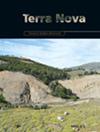断层万岁亚平宁半岛中部中生代断裂相关断层系统的双重反转
IF 1.7
3区 地球科学
Q2 GEOSCIENCES, MULTIDISCIPLINARY
引用次数: 0
摘要
意大利亚平宁半岛中部的圣波蒂托地区位于拉齐奥-阿布鲁齐碳酸盐岩平台内,该地区出露的异常沉积碳酸盐岩充满了侏罗纪断裂时期形成的平台内盆地。该盆地的东部边界断层系统斜向于新生代推断断层和延伸断层的西北-东南走向,在构造造山运动和后造山运动特征方面发挥了关键作用。该断层的大片区域经历了双重再活化:中新世缩短时期的正反转和后成因延伸时期的负反转。双重再活化表现为老-新伸展接触,以及推力断层和新近伸展断层的走向从西北-东南转向西北-东南,后者与该地区侏罗纪断裂相关构造的走向一致。这种结构上的相互作用凸显了侏罗纪断层的重要性,以及它们通过跨越多个变形阶段,甚至通过控制活跃的伸展地震活动,对结构趋势产生影响的能力。本文章由计算机程序翻译,如有差异,请以英文原文为准。
Long live the fault! Double inversion of a Mesozoic rift‐related fault system in the central Apennines
The San Potito area in central Apennines (Italy), enclosed within the Latium‐Abruzzi carbonate platform, exposes anomalously pelagic carbonates filling an intraplatform basin formed during Jurassic rifting. Oriented obliquely to the regional NW‐SE trend of Cenozoic thrusts and extensional faults, the basin's eastern boundary fault system, striking N‐S, played a pivotal role in structuring orogenic and post‐orogenic features. Large tracts of the fault experienced double reactivation: positive inversion during Miocene shortening, and negative during post‐orogenic extension. Double reactivation is evidenced by older‐on‐younger extensional contacts, and by the change in orientation of thrusts and recent extensional faults from NW‐SE to NNW‐SSE, the latter being consistent with the trend of Jurassic rift‐related structures of the area. This structural interplay highlights the importance of Jurassic faults and their ability in forcing the structural trends, by surviving across multiple deformation stages, even controlling active extensional seismicity.
求助全文
通过发布文献求助,成功后即可免费获取论文全文。
去求助
来源期刊

Terra Nova
地学-地球科学综合
CiteScore
4.80
自引率
8.30%
发文量
59
审稿时长
2.3 months
期刊介绍:
Terra Nova publishes short, innovative and provocative papers of interest to a wide readership and covering the broadest spectrum of the Solid Earth and Planetary Sciences. Terra Nova encompasses geology, geophysics and geochemistry, and extends to the fluid envelopes (atmosphere, ocean, environment) whenever coupling with the Solid Earth is involved.
 求助内容:
求助内容: 应助结果提醒方式:
应助结果提醒方式:


